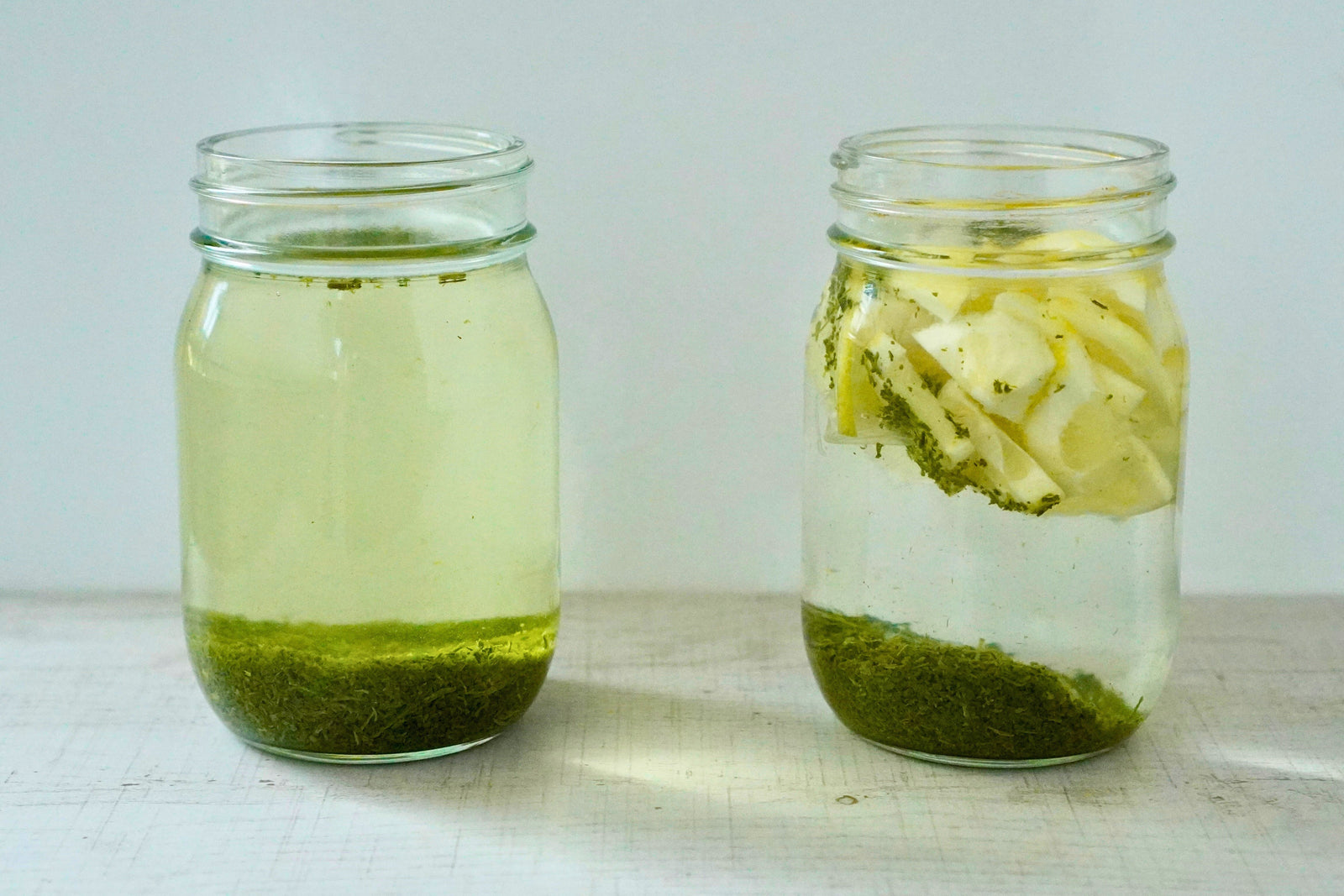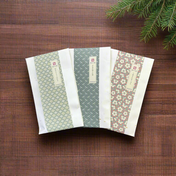レシピをテスト中に気づいたこと
最近、新しいレシピを試していた時に興味深いものを見つけたので、お茶好きの人たちにシェアする価値があるかもしれないと思いました。

水出し緑茶レモネードのレシピを練っていて、できるだけ簡単でおいしい方法を探していました。 「緑茶を淹れてレモンを浸すのを、全部ボトル1本で一度にやったらどうだろう?」と考えたのです。シンプルでいいアイデアだと思いました。そこでボトルを用意し、緑茶の葉とレモンのスライスを数枚入れ、水を入れました。そして冷蔵庫で数時間寝かせました。飲んでみると…何かが少しおかしいと感じました。私が期待していた繊細で爽やかな味ではありませんでした。緑茶の風味が薄く、単純に美味しくありませんでした。
最初に思ったのは、 「間違った茶葉を使ったのだろうか?」でした。
しかし、別の可能性が頭に浮かびました。レモンが緑茶に影響を与えたのではないか?
2つの醸造方法の比較
このアイデアを試すために、深蒸し煎茶、深蒸し煎茶の茶葉を使用し、ボトルを2本用意して簡単な実験をしてみました。
ボトルA:茶葉+冷水
ボトルB:茶葉+冷水+レモン半分(薄切り)
両方のボトルを冷蔵庫に入れて3時間水出ししました。水出し前と水出し後の様子がこちらです。
醸造前

3時間後

軽くかき混ぜた後

色と味の違い

ボトルA:緑茶(写真左)
- 色は透明で鮮やかな緑色でした。
- 口当たりは滑らかでまろやか、ほのかな苦みの中に優しい甘みと旨みを感じました。
ボトルB:レモン入り緑茶(右写真)
- 色は鈍く、黄緑色がかっていました。
- 味はレモンのような酸味とお茶の苦みはありましたが、いつものうま味と甘みが欠けていました。
味と見た目の両方で違いは明らかでした。
これは何が起こるのでしょうか?
緑茶は、ほとんどの水道水やボトル入りの飲料水が含む、弱酸性から中性(pH 6〜7)の水で淹れるのが最適です。
緑茶の主要成分の一つであるクロロフィルは、お茶に鮮やかな緑色を与えます。しかし、酸性条件下ではクロロフィルは分解され、黄緑色に変化します。これが、ボトルBのお茶が鮮やかな緑色を失った理由です。
また、酸性の水(レモン水など)は、お茶のうま味と甘味のもととなるテアニンなどのアミノ酸の抽出を阻害する可能性があります。そのため、レモン風味のお茶は酸味と苦味が強く感じられたのかもしれません。
レモンはお茶にとって美しく爽やかな風味を与えますが、抽出過程に加えると、高品質の日本緑茶が持つ繊細な風味のバランスを崩す可能性があります。
では、最善の方法は何でしょうか?
まず緑茶を淹れて、うま味、甘み、鮮やかな色を最大限に引き出します。お茶が出来上がったらレモンを加えます。こうすることで、緑茶本来の繊細な風味を保ちながら、レモンの爽やかな柑橘系の風味をお楽しみいただけます。
(写真:抽出後にレモンを加える(左)/最初からレモンを入れて抽出(右))

ぜひ試してみて、違いを実感してください!


